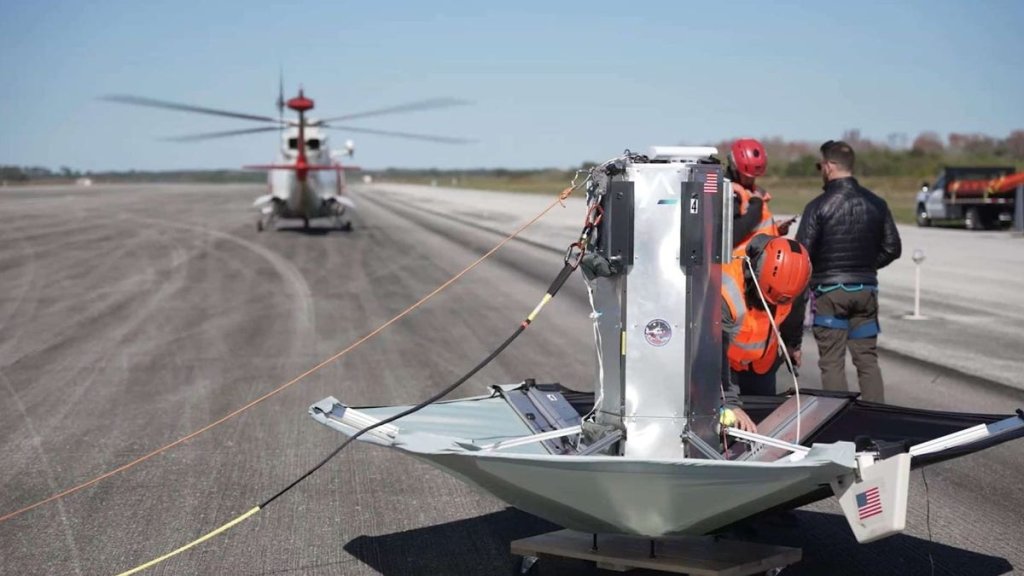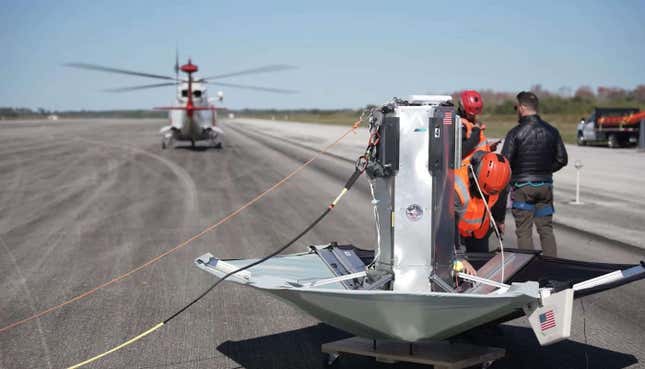Space Company Aims to Deliver Critical Supplies to Any Location in 90 Minutes

Space Company Aims to Deliver Critical Supplies to Any Location in 90 Minutes (Image Credit: Gizmodo-com)

Back in the 1980s, FedEx had a great tagline: “When it absolutely, positively has to be there overnight.” Well, in situations like ground conflicts and disaster scenarios, that’s not good enough. Recognizing the need for an ultra-fast delivery service, Colorado-based Sierra Space is currently developing a system to deliver supplies to virtually any spot on Earth in just 90 minutes.
Sierra Space has a bunch of cool projects on the go right now, including its Dream Chaser spaceplane and a planned commercial space station. Last week, the company caught the industry by surprise when it announced yet another ambitious project—a new platform called Ghost. The “revolutionary new logistics spacecraft,” the company claims, will serve as a “cutting-edge thermal protection system tailored for the safe return of small payloads from space.” The space logistics project is designed to provide on-demand courier services for a variety of clients, including national security operations and aid during natural disasters.
Related Content
“We envision having an inventory of Sierra Space Ghost vehicles strategically positioned and readily accessible and deployable within 90 minutes to critical locations anywhere on Earth,” Tom Vice, CEO of Sierra Space, said in a statement. The system should be capable of delivering supplies to “frontline personnel” within 100 yards of the specified target area, according to the company.
This announcement follows Sierra Space’s recent establishment of its Orbital Missions and Services organization, which focuses on innovative solutions for national security. The company says it’s already been awarded $1.3 billion in prime contracts for satellite constellations under this initiative.
Ghost underwent a series of three drop tests on February 1 at Space Florida’s Launch and Landing Facility. These tests included a terminal drop from 2,000 feet (610 meters) to assess impact dynamics, a controlled parachute descent from 4,000 feet (1,219 meters), and a separation of shield and payload components, showcasing the vehicle’s ability to safely return payloads.
Once this program gets going, a pre-loaded Ghost spacecraft would wait in orbit until instructed to reenter. The cargo may include a survival kit, an inflatable boat, rations, weapons, and other items. Upon activation, the spacecraft would re-orient, begin its re-entry, and use a thermal protection shield to withstand temperatures up to 2,000 degrees Fahrenheit. After re-entry, a parafoil would guide the payload to the designated landing area. Each satellite has an expected lifespan of five years, after which time they’d be retired and deorbited.
Related article: Firefly Aerospace Sets New Launch Speed Record for U.S. Space Force Mission
It’s a cool and useful idea, one that makes sense given our ever-increasing ability to reach and work in space. Coupled with rapid-response technology, in which rockets can be launched on 24 hours notice, this could truly revolutionize our ability to get stuff to the people who need it the most, when it absolutely, positively has to be there in a hot minute.
For more spaceflight in your life, follow us on X and bookmark Gizmodo’s dedicated Spaceflight page.








